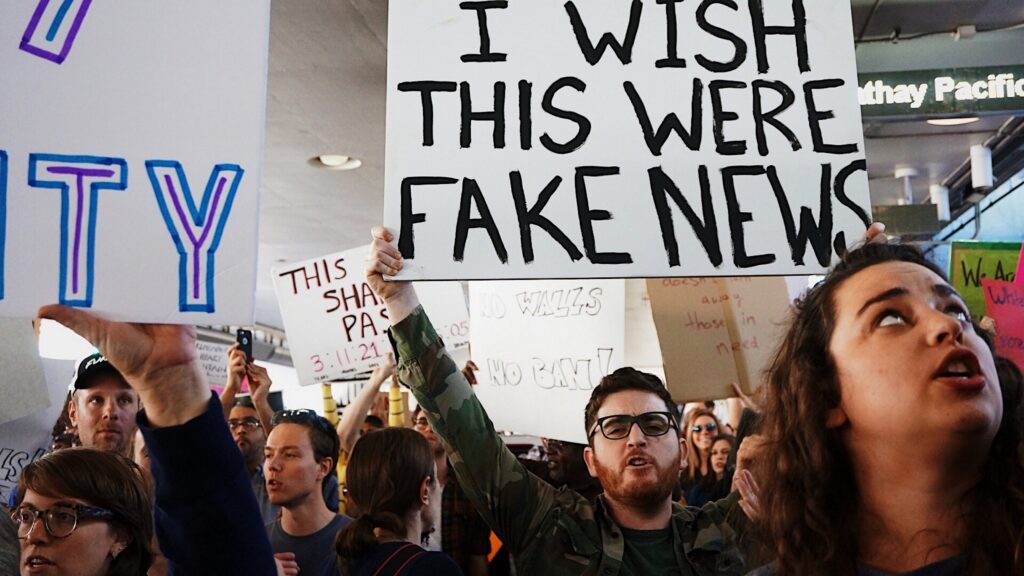
Good news for the media: number of so-called fake news is falling
Best Practices
Posted 25 Oct 2018
Or isn’t it decreasing? Or is it? And who even said that? Anyway, let’s stick to the facts: 7-8 lies a day – when we talk about fake news, we have to talk about Trump. He is undoubtedly the grandmaster of fake news. He made fake news great again! But he didn’t invent them, although he says so. Or didn’t he say so? It doesn’t matter. A brief history of prominent fake news. MFNGA! MFNGA! MFNGA!
We can assume that fake news are as old as mankind. Without written or other remains, we only know nothing of them. A random introduction to the history of fake news: Pharaoh Ramses II, who experienced a crushing defeat at Kadesh in present-day Syria in 1274 BC. Originally, he wanted to weaken and push back the Hittites in the north. Nothing came of it, because he fell for two Bedouins, who told that the Hittite ruler was trembling in fear (fake news!). A hastily attack carried out as a result ultimately led to the retreat of the pharaoh, but this did not prevent Ramses from declaring the whole thing a victory and recording the events comprehensively: With the help of the god Amun, he won. All a lie.
Fake news with a much greater impact is the “Donation of Constantine“. Supposedly issued by Emperor Constantine I around 315, he transferred the rule over the western part of the Roman Empire and all of Italy to Pope Sylvester I and guaranteed the primacy over the Eastern Churches out of gratitude for a miraculous rescue. Only problem: The document is a forgery from the 8th century. That didn’t bother much. By the time it was exposed as a forgery around 1430, it had long been part of church law and had been used for centuries to claim power. The church officially admitted the forgery in the early 17th century, but insisted on the donation, because it had actually been made. At least, the church said so. Only in the 19th century this too was over.
A small leap in time: In 1950, the then still young German Democratic Republic, GDR, in eastern Germany was afflicted by a potato beetle plague. However, the authorities weren’t able to contain the beetles. In the end between one-fifth and half of the agricultural land was infested. Because in “real existing socialism” the authorities couldn’t be responsible for the disaster, the class enemy had to serve: Through posters and media reports, the propaganda spread that the Americans had dropped the beetles – “Amikäfer” (“Yankee Beetles”) – over the GDR in order to weaken the country (no joke!). Of course, the Ministry of Agriculture knew that the cause was a lack of insecticides and poor organization. Nevertheless, the legend “of the six-legged invader” was actively spread – and believed by many.
With the Internet accessible to everyone, there is now no holding back when it comes to fake news. Whereas the media used to filter out or correct many false news through research, fake news and conspiracy theories are now spreading almost unchecked. There are countless examples. Not only the US President, who speaks of electoral fraud or lies about the number of states won. A fine example of the past year: “Morgan Freeman is dead“. Starting from Actionnews3.com the false report was shared millions of times, fans mourn. Freeman himself was alive and kicking, not dying.
The density of false news is problematic for PR too. Some time ago, various security providers reacted to a false agency report that an Austrian hotel had been hacked and the guests had been locked in their rooms by the hackers. That was close to the truth and still wrong. The hotel was indeed hacked. However, it was just no longer possible to issue new cards or open the doors from the outside. Fortunately, HBI waited a little before sending out the rapid response messages, did some research and didn’t fall for it.
Conclusion
Not every lurid headline, not every provocative message must be true. It is better to do your own research, think, wait and see: There is no study on the increasing or decreasing number of false reports. Or is there? Who knows…
– This article was written by Andrej Kornienko, Account Manager at HBI